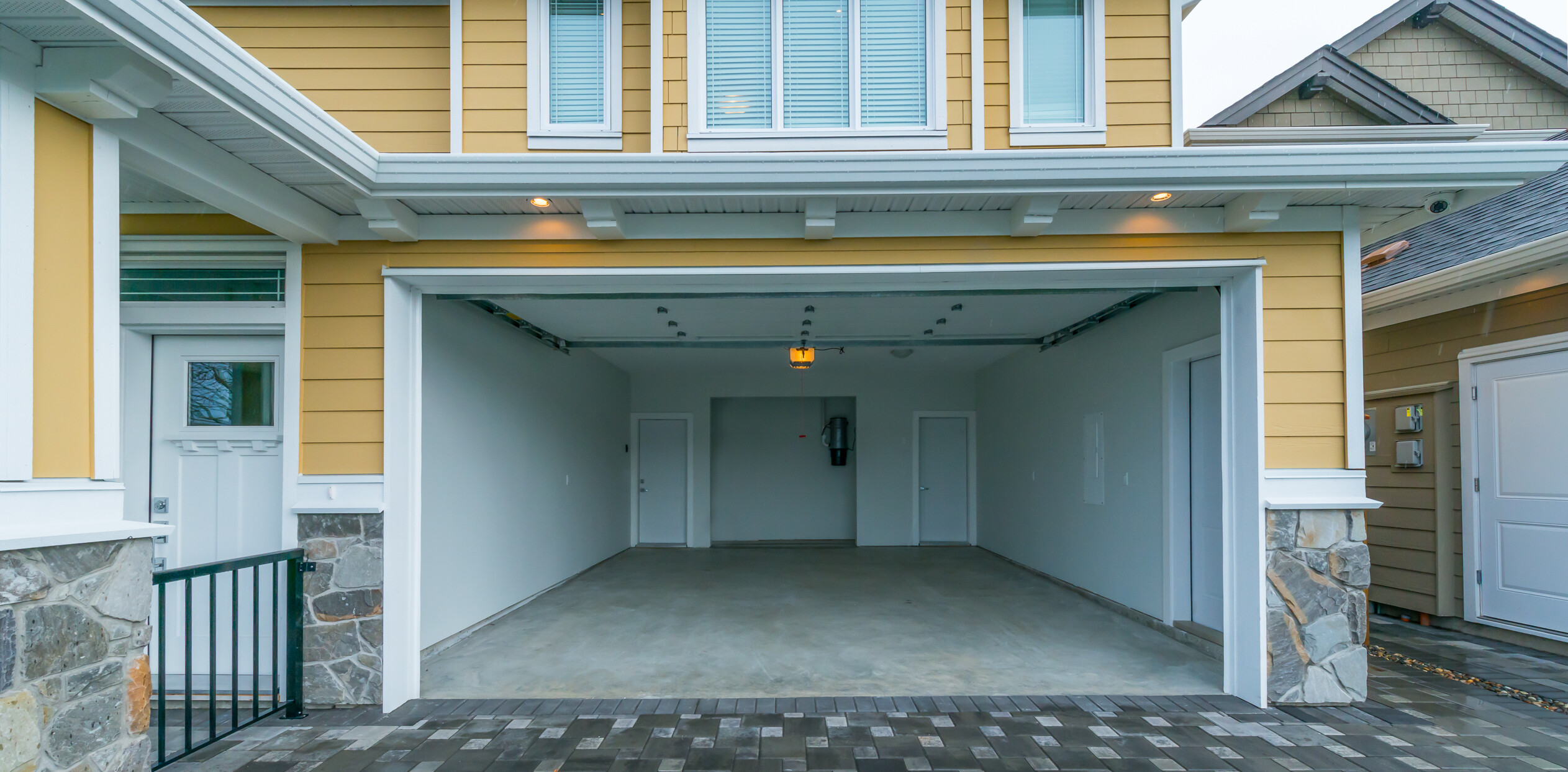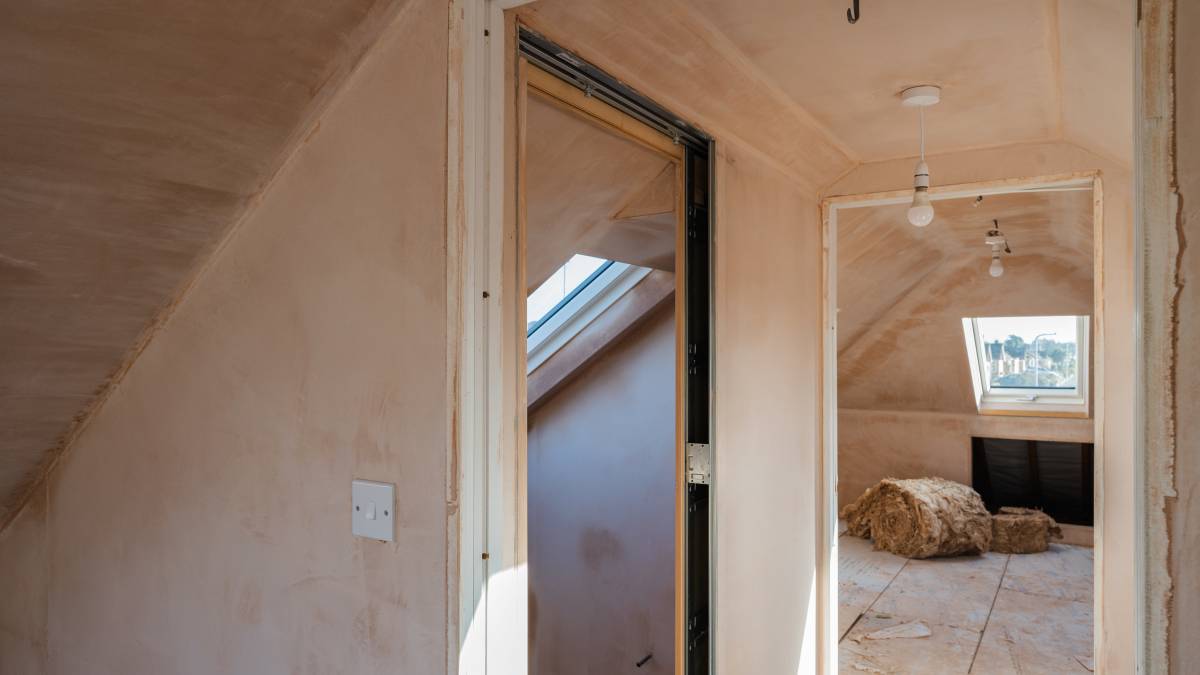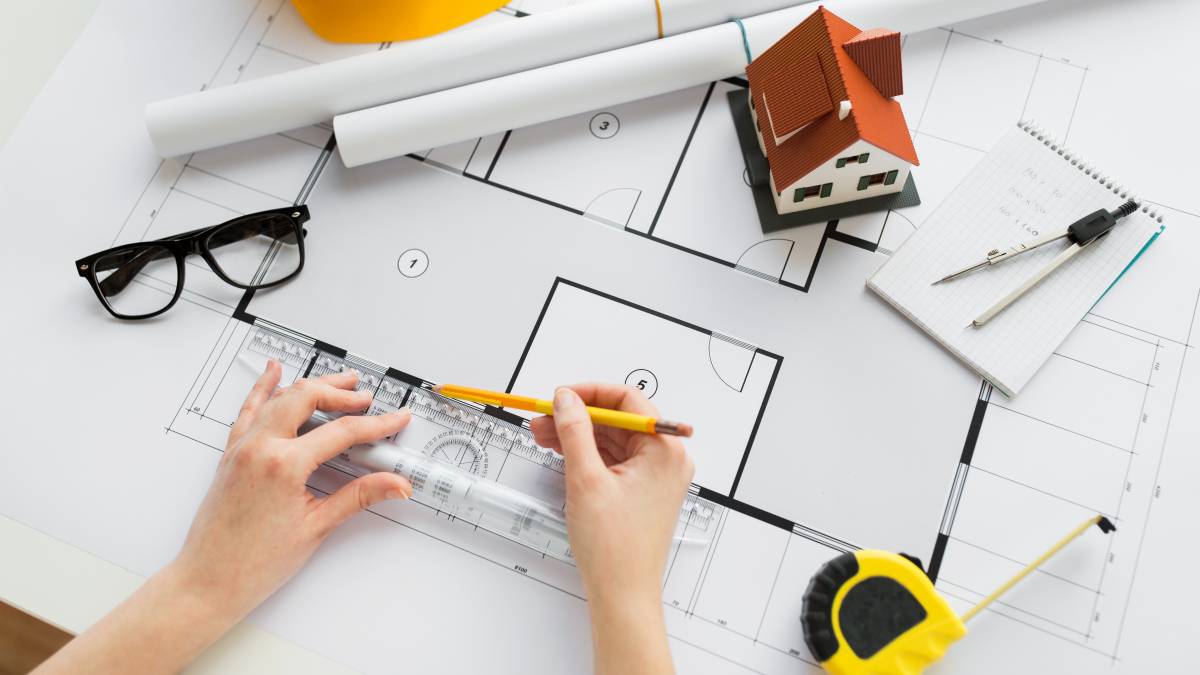
- Home/
- Comparisons/
- Architects/
- Architect vs Engineer
Architect vs engineer: Which professional should you hire?
Learn how architects and engineers differ based on project complexity, budget, and more.
Published on

Written by Cielo B.
Staff Writer
Read more about our contributor
Key Facts
An architect is a professional who designs detailed building plans, emphasising both aesthetics and functionality while ensuring safety.
An engineer is a professional who uses scientific and mathematical principles to design and construct buildings and infrastructure.
Planning to build a new home or a store for a budding business? Whatever the plan, knowing which professional to hire is crucial. Architects and engineers are the first ones in mind when it comes to construction and renovation projects. Although both have technical know-how in building design and construction, each has specific roles and responsibilities.
Learn more about their work in this architect vs engineer guide to find out which is more suitable to hire for specific building projects.
What is an architect?
 Architect reviewing building plans in a workspace. (Source: iStock)
Architect reviewing building plans in a workspace. (Source: iStock)
An architect is a professional who creates detailed building designs and blueprints using software tools like Computer-Aided Design (CAD) and Building Information Modeling (BIM). Their job is to produce exquisite building design concepts while keeping functionality and safety in mind.
Part of an architect’s role is coordinating with various building contractors and subcontractors, ensuring that the materials and finishes used for the construction are correct and within the budget. Often, an architect does site visits, but their primary role is to plan and create designs, so their work is office-based.
Like other professions, architects come in many types and specialisms:
Residential architects specialise in designing functional living spaces for residential buildings like flats.
Commercial architects specialise in designing office buildings, shopping centres, retail stores, and other commercial properties.
Landscape architects produce designs for gardens, parks, and other outdoor spaces, seamlessly blending artificial structures into the natural environment with sustainability in mind.
Interior architects often work on commercial and residential projects, focusing on interior design vs interior decorating.
Urban designers work with government bodies to create organised and functional layouts for cities, towns, neighbourhoods, and other urban areas.
In the UK, to become an architect, one must earn a degree accredited by the Royal Institute of British Architects (RIBA), which can last up to five years. However, the total number of years needed can reach seven because they must earn at least two years of practical experience before registering as architects in the Architects Registration Board (ARB).
What is an engineer?
 Engineers assessing the structural framework at a building site. (Source: iStock)
Engineers assessing the structural framework at a building site. (Source: iStock)
An engineer is a professional who designs and constructs buildings and infrastructures using scientific and mathematical principles. They conduct a cost analysis and feasibility studies to determine whether a construction project is achievable within the client’s budget and design plans.
The role of an engineer is to ensure that the construction project adheres to local building codes and regulations. Engineers often coordinate and collaborate with architects to help improve the safety and functionality of the proposed architectural design.
There are also many types of engineers:
Civil engineers focus on large-scale infrastructure projects like road construction, dams, and water supply systems.
Structural engineers focus on finding solutions and choosing the right materials to keep buildings and infrastructures stable and safe.
Mechanical engineers focus on systems like heating, ventilation and air conditioning (HVAC) in buildings.
Electrical engineers ensure that the wiring, lighting, power distribution, and other electrical systems within buildings are safe, reliable, and meet all building codes and standards.
Architectural engineers are also building engineers who work closely with architects to ensure the building’s ventilation, heating, and plumbing systems work properly, creating a safe and functional structure.
In the UK, to become an engineer, one must finish a bachelor’s degree in engineering accredited by the UK Engineering Council and the Institution of Civil Engineers (ICE), which can last three or four years. Those who want to earn a professional qualification like a Chartered Engineer (CEng) status could earn a Master’s degree in Engineering (MEng) and gain relevant experience.
Engineer vs architect: What’s the difference?
Let’s dive deeper into the differences between an architect and an engineer, so you can better understand their roles and responsibilities.
In terms of project complexity
 Team of engineers planning and coordinating a construction project. (Source: iStock)
Team of engineers planning and coordinating a construction project. (Source: iStock)
Architects and engineers handle different project complexities. Architects focus more on the various design aspects of a building project, whether it’s a simple residential structure or a more complex commercial building. This includes producing a spatial blueprint that outlines how the lighting, furniture, and other aesthetic building elements should be arranged to create a functional and comfortable living space.
In addition to handling the design, architects are expected to manage clients, collaborate with building contractors, subcontractors, and engineers, and obtain permits and approvals.
Meanwhile, engineers focus more on the technical and structural aspects of the project. Part of their job is to calculate the load distribution and assess the strength of the building materials to ensure the final design is safe, stable, and durable. Because of this, they usually handle more large-scale construction projects like high-rise buildings, bridges, and tunnels.
However, engineers can still be involved in less complex projects, such as residential houses, since these buildings also need to be safe to live in.
In terms of design requirements
When it comes to building design and construction, architects are tasked with developing innovative and creative designs that meet the artistic and aesthetic goals of the project. This involves creating multiple blueprints that show the different parts of the building from various perspectives. Through these blueprints, clients can also envision the proposed designs from different sides and what each floor and roof looks like.
On the other hand, engineers’ design requirements include developing detailed engineering drawings that outline the critical structural components of the building. This includes producing technical blueprints for the Heating, Ventilation, and Air Conditioning (HVAC) systems, plumbing systems, and electrical lines.
Moreover, engineers must conduct risk assessments through a feasibility study when developing an engineering design. This is to foresee the potential issues that might risk the safety and longevity of the building.
In terms of regulatory knowledge
 Engineers taking precise measurements for quality control. (Source: iStock)
Engineers taking precise measurements for quality control. (Source: iStock)
Architects are more involved in the planning permission process, so they typically have a broader knowledge of building code regulations than engineers. They usually prepare technical documents such as the Full Plans Application, which consists of detailed architectural blueprints, and the Building Notice, which is a notice to start the construction process.
On the flip side, engineers are less involved in submitting and obtaining building permits and processing approvals. However, they may still be involved in drafting the Full Plans Approval document since architects need their input and structural calculations to ensure the proposed architectural design is safe. Their technical knowledge helps increase the chances of getting the client’s building project plans approved.
In terms of budget
Residential building projects are expensive, considering the house renovation costs alone. This is why you need someone to help manage the budget to reduce overall expenses. It’s best to work with both architects and engineers to manage the budget since they’re heavily involved in the construction process.
Architects can help outline the costs for materials, finishes, and construction methods related to design while making budget adjustments to avoid exceeding the client’s financial limit. Meanwhile, engineers can help evaluate construction materials such as steel, concrete, and other foundational elements. They may also project long-term operational costs, such as the maintenance and energy efficiency of the building.
In terms of project timeline
 Architect refining floor plan details alongside a building model. (Source: iStock)
Architect refining floor plan details alongside a building model. (Source: iStock)
Although project timelines for architects and engineers often overlap because they typically have to work together throughout the project, architects still have a shorter project timeline than engineers. This is because architects are only heavily involved in the initial design conceptualisation, building permitting, selection of contractors and subcontractors, and construction administration, which includes regular site visits.
While obtaining permits and approvals takes time, once the construction is done, all that’s left for the architect is to do a final inspection. In contrast, engineers still have to monitor for long-term issues that might arise after the construction process.
Moreover, engineers handle more complex projects than architects. This includes large public works and infrastructures, which can take longer than the house renovations that architects typically manage.
In terms of communication and collaboration
Architects are the principal project coordinators, communicating building design ideas to clients and discussing these designs with engineers and contractors. This is why they must develop clear communication skills to relay important information to various stakeholders, preventing costly revisions, delays, or structural issues.
Their communication skills must go beyond verbal, as they must also excel at visual communication. This involves proficiently using software tools like CAD to create detailed plans that engineers and builders can easily understand.
Meanwhile, communication and collaboration can be more challenging for engineers due to the nature of their work. Remember that they typically handle technical, structural details, which might be difficult to explain clearly to those without an engineering background. However, effective communication is important to engineers, as they’re the ones who can ensure the final design is safe to be built.
Hire a trusted architect on Airtasker
While hiring architects and engineers might incur extra costs, their services are worth it because of their skills and expertise in handling various complex projects. They can develop creative and innovative solutions to elevate various building designs, whether residential or commercial.
If you’ve decided to hire an architect, use Airtasker to find one who meets your needs, budget, and schedule. Post a task today and let a pro bring functionality and safety to your living space.
Learn more about our contributors

Written by Cielo B.
Staff Writer
Cielo is an experienced content writer who has explored various industries throughout her career. Her expertise, founded on a degree in journalism, includes writing about automotive and home maintenance. Cielo also covers topics like dressmaking, tailoring, and photography since she is a passionate cosplayer who enjoys dressing up as her beloved anime characters.
Architect vs Engineer
Architect |
Engineer |
|
|---|---|---|
Project Complexity |
Focuses on design and aesthetics for residential and commercial projects |
Handles technical and structural aspects, often for large-scale projects |
Design Requirements |
Creates innovative designs and blueprints; coordinates with contractors |
Develops detailed structural and systems drawings; conducts feasibility studies |
Regulatory Knowledge |
Manages building codes and permits; prepares technical documents |
Assists with technical aspects of permits and compliance |
Budget |
Estimates costs for design and materials; adjusts to stay within budget |
Evaluates material costs and long-term operational expenses |
Project Timeline |
Involved in initial design and permitting, with a shorter timeline |
Longer timeline due to complexity and long-term monitoring |
Communication and Collaboration |
Coordinates with clients, engineers, and contractors |
Focuses on technical details and ensures safety. Communication is more technical |
FAQs on architects and engineers
Architects come first because they usually lead building projects and create the initial design, ensuring the client’s vision and requirements are met. Only after the final draft of the design has been made will the architect collaborate with the engineers to discuss the safety and structural integrity of the design.
Yes, an architect can be an engineer with the right supplementary training. Specifically, they can become architectural engineers if they seek further supplementary education in engineering principles, technical design, and material science.
No, a building engineer is not the same as a structural engineer. A building engineer focuses on essential building systems like the HVAC, plumbing, and electrical systems. In contrast, a structural engineer typically works with the architect to ensure the materials and designs are safe and comply with the building codes. However, it’s important to note that structural engineers and architects are different since the latter focuses more on the design and aesthetics of the building.
Find architects, fast
Post a task
Related articles
Related price guides







